I am new to react native development, but i have some requirement with react navigation drawer. I want to display the navigation drawer from top of the screen but it is display below from toolbar. It is a combination of both Stack and Drawer screens. Following is my code in App.js
function App() {
SplashScreen.hide()
return (
<NavigationContainer>
{/* headerMode='float' */}
<Stack.Navigator initialRouteName='Login' >
<Stack.Screen name="Login" component={LoginScreen}
options={{ headerShown: false }} />
{/* <Stack.Screen name="Home" component={HomeScreen} /> */}
<Stack.Screen name="DrawerScreens" component={DrawerScreens}
options={({ navigation, route }) => ({
title: "Home",
headerTintColor: '#FFFFFF', headerStyle:{backgroundColor:'#154493'},
headerLeft: props => <NavigationDrawerStructure navObj={navigation} />,
})} />
<Stack.Screen name="Dashboard" component={Dashboard}
options={({ route }) => ({headerTintColor: '#FFFFFF', headerStyle:{backgroundColor:'#154493'}})} />
</Stack.Navigator>
</NavigationContainer>
DrawerScreens function is like following..
function DrawerScreens({ route, navigation }) {
// console.log("param:"+route.params.token)
return (
//drawerContent={props=>CustomDrawerContent(props)}
// <SafeAreaProvider>
<Drawer.Navigator drawerContent={props => CustomDrawerContent(props)} headerMode="float" >
{/* <Drawer.Navigator drawerContent={props => CustomDrawerContent(props)}> */}
{/* options={{ drawerLabel: 'Updates' }} */}
<Drawer.Screen name="LandingScreen" component={LandingScreen}
initialParams={{ token: route.params.token }}/>
);
}
CustomDrawer function contains list of the menu items which is dynamic and NestedMenuView is taking care of that..
function CustomDrawerContent(props) {
return (
<SafeAreaView style={{flex: 1}} forceInset={{ top: "always" }}>
<NestedMenuView navObj={props.navigation} />
</SafeAreaView>
);
};
For me the combination of both stack and drawer screens.Thanks in advance.
